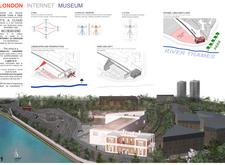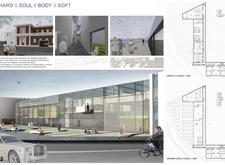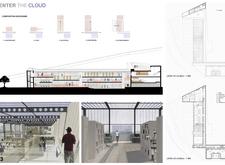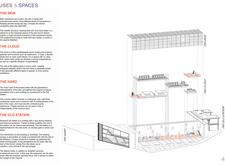5 key facts about this project
At its core, the project is designed for [insert primary function, e.g., residential, commercial, civic], emphasizing a commitment to usability and comfort. The thoughtful layout ensures that each space is optimized for its intended use, allowing for a fluid connection between different areas while fostering interaction among users. From gathering spaces to private areas, every aspect of the design is crafted to support the desired activities, making it an efficient and inviting environment.
Upon examining the architectural design, one notices the deliberate massing and form that characterize the building. The silhouette is carefully articulated to respond to [mention contextual factors such as the landscape, surrounding architecture, or climate], creating a structure that feels at home in its setting. The exterior materials are selected with sensitivity, balancing aesthetic appeal with durability. The use of concrete provides strength and stability, while glass elements invite natural light into the interior, enhancing the overall atmosphere.
Rooflines and overhangs are designed not only for visual interest but also to improve energy efficiency by managing sunlight and rainwater. The incorporation of sustainable practices, such as [insert any sustainability features like green roofs or energy-efficient systems], reflects a commitment to reducing the environmental impact of the building. These elements create an educational opportunity as they demonstrate how architecture can harmonize with ecological considerations.
The interior of the building is equally important, designed with a focus on user experience. Open floor plans facilitate movement and encourage interaction, while designated quiet areas provide spaces for reflection and concentration. The materials chosen for interior finishes, including wood and stone, add warmth and character, making the spaces feel inviting and comfortable. Additionally, the integration of technology is seen throughout the design, with features that cater to modern needs while maintaining simplicity and accessibility.
Unique aspects of the project emerge in its creative approach to community integration. The design process involved consultation with local residents, ensuring the project not only meets architectural standards but also resonates with its community. By reflecting local culture and integrating community input, the project embodies a sense of place that enriches the user experience and fosters a feeling of belonging.
Overall, the design illustrates a sophisticated understanding of contemporary architectural practice, balancing functionality with an aesthetic sensitivity to the site. The project stands as a testament to the possibilities of modern architecture when it is grounded in a thoughtful exploration of context, materiality, and user needs. For those interested in delving deeper into the architectural principles that inform this design, exploring the architectural plans, architectural sections, and various architectural ideas will provide further insights into how this project came to fruition and the underlying philosophies that guide it.


























